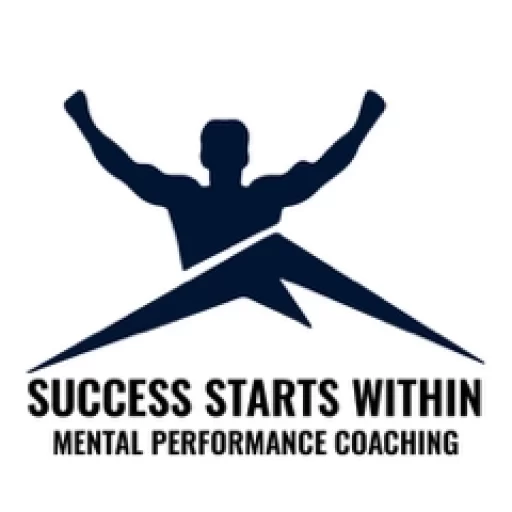When you’re wanting to achieve an outcome, there is a mindset you must adopt which will multiply your chances of success.
No matter what you do, there are targets you’ve put in place for yourself that you see as determining your level of accomplishment. Maybe it’s a state line, a certain number of clients, or an amount in a bank account.
There is absolutely nothing wrong with setting such goals for yourself. Except, of course, when you focus on them.
The attainment of an outcome does not come from placing your attention on that outcome. Rather, you achieve results as a byproduct of the work you put forth. That work is known as the process, which is why you need to learn how to utilize process goals.
What Are Process Goals
In the practice of setting goals, there are different steps you follow. When looking at goal setting on a yearly scale, you would set one large yearly goal. From there you would begin to break that goal down into different steps.
The step immediately below your yearly goal would be monthly goals (there would be twelve of these). Next, break down each monthly goal into weekly targets. From there, you would identify what would need to be done each day, working to accomplish your weekly goal.
Do you notice how we broke one large goal down into many smaller building blocks, all working to construct the ultimate outcome you desire?
That is a very basic idea of what process goals are.
Process goals focus on the process, or steps needed to be taken to achieve a result. If done correctly, you don’t even need to worry about the outcome any longer.
A key component of process goals is control. Outcomes are very rarely completely within our power. They happen as a result of steps taken on our part, along with external factors.
Process goals, however, are going to be completely within your control. This means, you are the one who holds the power over achieving them.
I said in the introduction that the only thing wrong with setting an outcome goal for yourself is focusing on it. By putting process goals into place, you eliminate the need to worry about the end result.
Outcome Vs Process Focused
A way of thinking that helps me when differentiating between process and outcome goals is seeing the outcome as a stationary, single object, and the process as a combination of actions.
Whenever we have an outcome, it typically revolves around a single point or target. For example, if a baseball player says their goal is to get 3 hits in a game, the achievement of that goal would come at the end of the game on the stat sheet.
It would be clear whether or not that outcome was achieved. However, the process involves many moving parts.
Going off the same example, process goals for the baseball player would involve batting practice before the game, his pregame routine, the way he walked up to bat, how he handled an early game strike out, and so on.
Are you beginning to notice the difference? An outcome oriented goal focuses on the large what, and process goals focus on the how.
Not only does the how you are identifying involve the physical actions you must take, but the mental state you need as well.
Thinking about the process involves diving into every aspect that will contribute to the outcome you desire. Your attitude and mental state is going to play a huge role in the likelihood of you attaining success.
This is especially true in athletics.
When thinking about process goals for a game, the mental side plays just as important of a role as the physical side. You must decide what attitude you want heading into the game, what is your goal mindset when you make a mistake, and so on.
You’ll learn exactly how to outline both physical and mental process goals later in the article. First, let’s take a look at all the benefits you can expect when you begin setting process goals for yourself.
Benefits of Process Goals
There are many negatives associated with focusing too much on the outcome. Any outcome you’re after will always lie in the future. When it enters the present moment, you’ve achieved it, therefore, no more worries are taking place.
Leading up to that moment, it will always be a point in the future.
If you truly want a certain outcome, as funny as it may sound, you need to let go of the outcome and give your complete focus to every step along the way.
Process Goals Reduce Anxiety
A key ingredient to anxiety is outcome oriented thinking. Anxiety needs your mind to be focused on the future, otherwise there’s no reason for you to grow worried.
No matter whether you’re worried about something happening a few minutes from now, a few days from now, or even a few months from now, your concern lies in the future.
What happens when you begin to use process goals is, these worries start to fade away.
Much of the anxiety we feel deals with what ifs. What if this will happen, what if this doesn’t happen…it’s all concerned with an outcome.
So, a logical solution to this form of thinking is shifting your attention away from the future. That is exactly what happens when you set process goals.
You are no longer worried about an outcome, instead your only concern is the process that you have complete control over.
Process Goals Improve Focus
It can seem very difficult and daunting when you set a large goal for yourself.
Having this idea of a certain outcome may even seem unattainable. When this occurs, a common response is to feel overwhelmed and as though you have no direction.
This is one of the main reasons for the goal breakdown I outlined earlier. When you go all the way down to crafting process goals, now you have direction in the moment.
When you’re using process goals in the middle of a game, this helps to eliminate distractions and increase your focus on the task at hand.
Instead of falling prey to worries and concerns, based on the chance of not performing well, the process provides you a positive place to center your attention. This is going to improve your focus in the moment.
On a larger scale, process goals give you much needed direction. When you break down a large goal into the process that will help you get there, you increase your focus each day.
Instead of feeling as though your goal is unattainable, you now are focused and giving optimal effort to the process. As a result, you can let go and trust that the outcome will take care of itself.
Process Goals Reduce Perfectionism
Anybody who has felt perfectionism knows it’s a terrible mental challenge to deal with. Not only that, but perfectionism reduces your chances of reaching the outcome you are so desperate to attain.
A major contributor of perfectionism is not having a clear definition of what it means for you to be successful each day. With process goals, you can change that.
Each day, you are giving yourself a target to work towards. One that is completely within your control to reach.
By setting goals for yourself that deal with the process, by the end of a day, you’ll be able to look back and determine whether or not you were successful. How? By seeing if you stuck to your process goals, simple as that.
Once again, this is eliminating the need to worry about the outcome. But what it’s also doing is ensuring each day you are putting in the necessary work to push you closer to that outcome.
How To Set Process Goals
Not only do process goals reduce anxiety, increase your focus, and reduce perfectionist tendencies, they also increase the chances of your success.
Outcomes do not come from focusing on them. Rather, they are achieved through continual effort given to the process. Knowing what that process is, and how you can best leverage it, is where setting process goals comes into play.
Step 1: Identify Your Outcome
I am not against having an outcome you desire. What I am against is allowing it to become your focal point of attention.
Understanding the results you’re after is a key component to setting process goals. After all, the outcome is going to be the end of the journey, or at least a marker where you wish to arrive.
Let’s look at this in two different respects. The first is going to be when setting a large goal, let’s say six months from now.
You need to get very specific about the outcome you want. This part does not need to be within your control as completely as process goals do. For example, you could say you want to raise the revenue in your business by ten percent.
There are aspects of such a goal within your control, but much that is not. That’s okay when identifying the outcome.
Main thing is, be very specific, as that will help when figuring out your process to get there.
If you are setting outcome goals on a smaller scale, such as a game for example, decide on an outcome you would like to see happen.
I would often say I’d like to get two hits, or maybe a home run in a game. It may seem odd to set outcome goals such as this with what I’ve covered in this article, however, what this does is get your mind thinking about how to achieve that goal.
Once I set my outcome, I would then have to shift my mindset and think, “Okay, how can I put myself in the best position to make that happen?”
Set your intention, and then let it go! Shift your mindset onto the process that will get you there.
Step 2: Outline What The Process Will Look Like
As you’re removing your attention from the outcome onto the process, this is the step where you determine what that process is.
What needs to happen in order for you to reach your large goal? During a game, how do you need to be, physically and mentally, to put yourself in the best position to succeed?
If you’ve set a large goal for yourself, this is where you will reverse engineer what it will take for it to be accomplished. What is the process you need to put in place on a daily basis in working towards the outcome?
Going off the example from earlier, if your goal is to increase revenue, what process needs to happen each day? What are the actions that need to be taken?
Within your sport, what training needs to happen for you to reach the stat outcome you want or win that championship?
Within each game, what is the process which is your responsibility to perform? Not anyone else’s, but yours? That is what you need to identify here.
Step 3: Identify Physical and Mental Process Goals
We are now talking on a daily basis. The process towards an outcome is made up of individual moments and days. If you are worried about the process you must follow next week, that is taking you out of the process you have control over right now.
The key component to having process goals positively impact you is focusing on them in the moment. To do so, each day you must give yourself a target to focus on.
You are going to choose three physical and three mental process goals every day. The physical ones will likely come from the process you outlined in step two.
Get very specific as to what physical characteristics and actions will help you the most. For example, a basketball player may have a physical process goal to follow through on each shot.
You see how that’s within their control? Not make the shot, but simply follow through.
A physical process goal for someone wanting to raise their income may be making ten phone calls a day, or messaging twenty prospective clients daily.
Now for the mental side, this is going to involve your focus and attitude.
One of my favorite ones to set is to remain confident no matter what. This involves forcing myself to feel confident, even after a mistake.
Another mental process goal could be to repeat a self-talk routine to yourself each day, as you know that will increase confidence and reduce anxiety.
So, for the last step, each day you will identify three process goals on the physical side and three on the mental side.
Final Thoughts
No outcome is gained through constantly grasping to the hope of achieving it. You get results based on the work you put forth. That work is known as the process.
It’s not bad to identify an outcome, as that provides you with a target. However, once you do, forget about the outcome and shift your attention onto the process.
The best way to keep your mind focused on the process is by setting daily process goals. Aim to set three for both the physical and mental side, and you will be placing yourself in the best position each day to achieve the outcome you desire.
I hope you found this article helpful on the ways process goals benefit you, and how you can get started with process goals yourself.
If you have any questions, please feel free to reach out to me at [email protected].
Thank you for reading and I wish you the best of success in all that you do.





